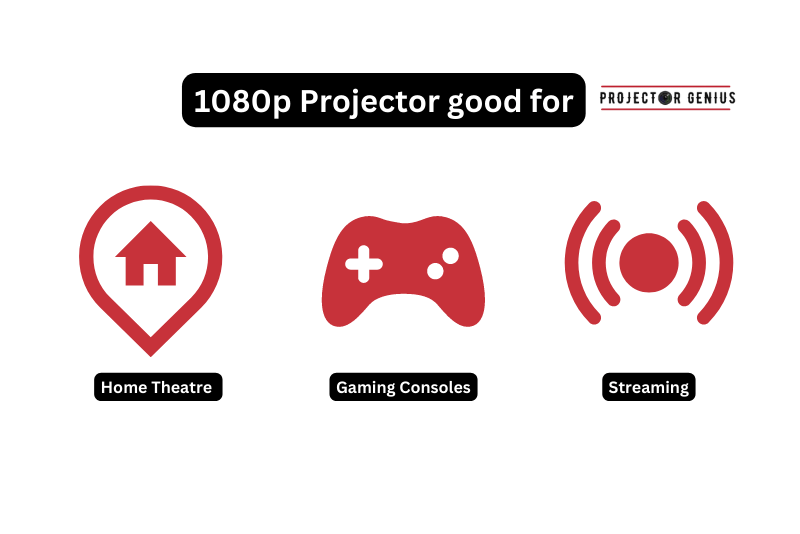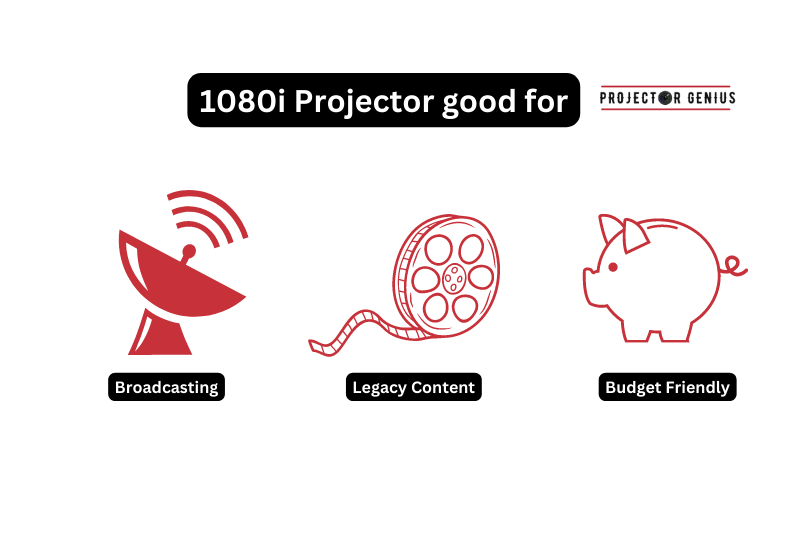1080i vs 1080p: Which Is Right For You In 2023?
-
 Written by:
Kristy Roger
Written by:
Kristy Roger
- Last Updated:
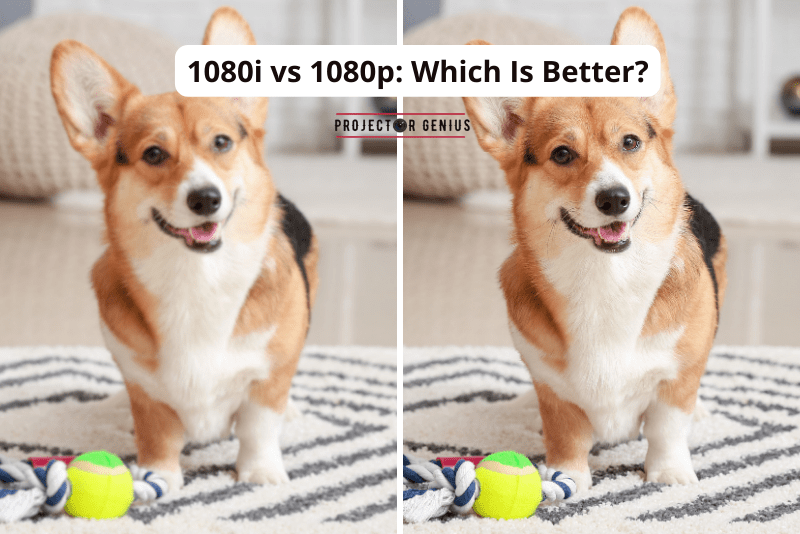
Ever wonder what’s up with all these numbers and letters like 1080i and 1080p? Trust me, you’re not alone.
These aren’t just random characters; they’re your ticket to an awesome viewing experience. Whether you’re into movies, gaming, or binge-watching TV shows, knowing the difference is key.
Why care? Simple. One letter can change your whole experience. “i” stands for interlaced, and “p” means progressive.
Each has its own pros and cons that can affect how clear your picture looks or how smooth the action feels.
And hey, understanding this stuff might even save you some money on your next TV or gaming console.
So, let’s get into it. We’re gonna break down the 1080i vs 1080p debate.
I recommend using the Table of Contents to quickly access the information you need.
My article is designed to cater to home cinema users of all levels, from Beginners to Advanced enthusiasts.
Table of Contents
What is 1080p? (Progressive Scan)
A 1080p is referred to as “progressive scan” with a resolution of 1920×1080 pixels. In this format, each frame of the video is displayed progressively, meaning that all the lines of the image are drawn sequentially in one pass, providing smoother and more fluid motion.
It is also known as “Full HD” or “FHD.” 1080p is often used in televisions, computer monitors, video game consoles, Projectors, and other devices that require high-quality video playback.
Read full guide: Is 1080p Worth It?
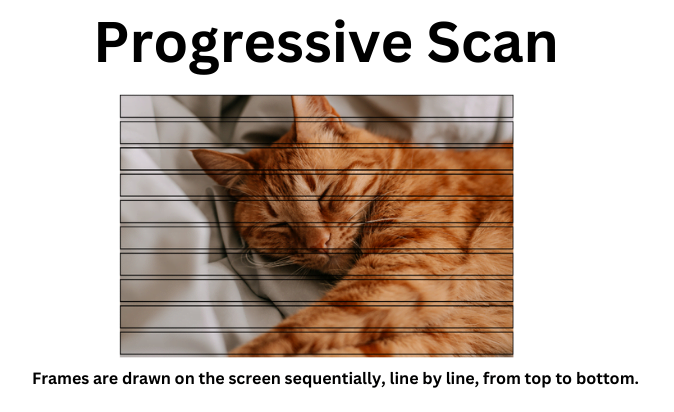
What is 1080i? (Interlace Scan)
1080i stands for “interlaced” with a resolution of 1920×1080 pixels as well. In this format, the video is divided into two fields, odd and even, and each field is displayed alternately.
The odd field is displayed first, followed by the even field, which may result in some motion artifacts or flickering, especially during fast-paced motion. While 1080i provides a high-definition picture, it is less common in modern displays and is mainly used in broadcasting standards like ATSC and DVB.
Read full guide: Is 1080i Worth It?
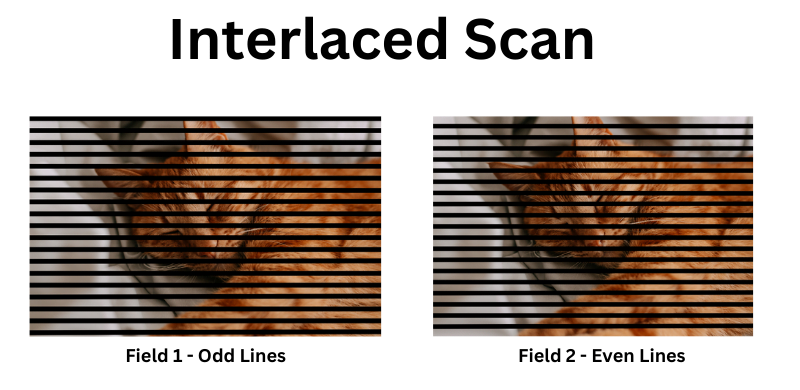
1080i vs 1080p: What’s the Difference Between 1080i and 1080p
Both 1080p and 1080i have widescreen aspect ratios and offer high-definition video quality, but they differ in their scanning methods, with 1080p being progressively scanned and 1080i being interlaced.
The main difference is the scanning method used to display the images. 1080p Projectors offer a smoother and more modern viewing experience, while 1080i Projectors are older and may not provide the same level of motion clarity. If you want the best video quality and fluid motion, a 1080p Projector would be a more suitable choice.
Which is Good for Projector: 1080i or 1080p?
For a Projector, 1080p is generally considered better than 1080i for most situations. Here’s why:
Image Clarity
1080p offers higher image clarity due to its progressive scan. Each frame is displayed sequentially, providing smoother motion and reducing artifacts during fast-paced scenes. This results in a more immersive and enjoyable viewing experience.
Motion Handling
As mentioned earlier, 1080p’s progressive scan handles motion more effectively, making it ideal for projecting movies, sports events, and video games with fluid motion and reduced flickering.
Compatibility
Many modern video sources, such as Blu-ray players, streaming services like Netflix, and gaming consoles, output content in 1080p. By using a 1080p Projector, you can fully utilize the potential of these sources and enjoy their content in its native resolution.
Future-Proofing
With technology advancing rapidly, 1080p is becoming the standard for high-definition content. Investing in a 1080p Projector ensures compatibility with current and future video sources for years to come.
Availability
1080p Projectors are widely available in the market with various options to fit different budgets and preferences. The popularity and prevalence of 1080p Projectors make them easier to find and compare.
While 1080i Projectors may still be available, they are less common in modern setups due to the advantages of 1080p Projectors.
Best Use of 1080p Resolution
1080p is best utilized in various multimedia applications where high-definition video quality is essential. Here are some of the best uses of 1080p:
Home Theater Systems
1080p is ideal for home theater Projectors and large-screen televisions, providing a cinematic experience with sharp, clear images and smooth motion for watching movies, TV shows, and sports events.
Gaming
Gamers can enjoy immersive gameplay on consoles or PCs with 1080p resolution, delivering detailed graphics and fluid motion for a more engaging gaming experience.
Streaming Services
Many online streaming platforms, such as Netflix, Amazon Prime Video, and YouTube, offer content in 1080p resolution. Watching movies, TV shows, and videos on these platforms becomes more enjoyable with higher image quality.
Blu-ray Discs
Blu-ray movies are typically encoded in 1080p resolution, making 1080p displays the perfect choice for enjoying the full high-definition quality of these discs.
Video Editing and Production
1080p is widely used in video editing and production workflows, allowing editors to work with high-quality footage and deliver professional-grade content.
Presentations
When delivering presentations or slideshows, using a 1080p Projector or display can ensure clear visuals and crisp text for better audience engagement.
Digital Photography and Cameras
Many digital cameras and camcorders capture videos and images in 1080p resolution, providing high-quality content for photographers and videographers.
Video Conferencing
During video conferences or online meetings, using a 1080p webcam or camera enhances the visual quality of participants and makes communication more effective.
Educational Content
1080p resolution is beneficial for educational content delivery, as it enables students to view instructional videos, animations, and diagrams with great clarity.
Advertisement and Marketing
Businesses and advertisers can showcase their products or services in high-definition quality with 1080p videos, ensuring a more professional and visually appealing presentation.
Overall, 1080p is a versatile resolution that caters to a wide range of applications, providing clear and detailed visuals for an enhanced user experience in various multimedia scenarios.
Best Use of 1080i Resolution
While 1080p is generally preferred in many modern applications, there are still some specific situations where 1080i can be considered useful:
Broadcast Television
Some TV channels and broadcasters still use 1080i for transmitting content, especially in regions where transitioning to full 1080p broadcasting may be more challenging or costly. In these cases, a 1080i display would be suitable for receiving and watching broadcasted content without any loss of quality.
Legacy Content
Older video content, such as classic movies, TV shows, or archived footage, may have been originally recorded in 1080i or even lower resolutions. Using a 1080i display for such content can help retain the original look and feel of these materials.
Interlaced Source Compatibility
Some older video equipment or devices might only output video in 1080i format. In situations where upgrading or replacing these devices is not feasible, a 1080i display can ensure compatibility with these sources.
Specific Broadcasting Standards
In regions or industries where specific broadcasting standards favor 1080i over 1080p, such as certain digital television systems, a 1080i display would be the appropriate choice.
Cost Considerations
In some cases, 1080i displays might be more budget-friendly than their 1080p counterparts. If cost is a significant factor and the application doesn’t heavily rely on fast-motion content, a 1080i display could be a viable option.
Specialized Applications
In certain specialized fields like surveillance systems or scientific imaging, where interlaced video might be more suitable for specific requirements, 1080i displays could be used effectively.
It’s important to note that while there are specific use cases for 1080i, its adoption has decreased over time due to the prevalence of 1080p and other progressive scan resolutions. In most consumer-oriented scenarios, 1080p offers superior image quality and better motion handling, making it the preferred choice for most modern applications.
Pricing comparison Between 1080p and 1080i Projectors?
The pricing of Projectors can vary significantly based on brand, features, specifications, and availability. However, it’s important to note that 1080p Projectors are more common and widely used in the market compared to 1080i Projectors. As a result, you may find that 1080p Projectors are more readily available across different price ranges.
In general, 1080p Projectors are often competitively priced, and you can find a wide range of options to fit different budgets. Entry-level 1080p Projectors can start from around $500 to $700, while more advanced models with additional features, higher brightness, and better image quality can range from $800 to $2,000 or more.
On the other hand, 1080i Projectors are less common in modern setups, and as such, there may be limited options available in the market. The pricing of 1080i Projectors, if you find one, can vary depending on the brand and specifications.
However, due to their decreased popularity and older technology, you might find that 1080i Projectors are less competitively priced compared to their 1080p counterparts.
Are there Budget-Friendly Options for High-Resolution Projectors?
I’ve often wondered if there are any wallet-friendly choices for projectors with high resolutions. So, I did a bit of digging, and the answer is yes! There are definitely budget-friendly options out there that offer impressive high resolutions.
I looked into different brands and models, and I came across the WiMiUS P62 and HAPPRUN 1080p projector, which are quite budget-friendly, ranging from around $135 to $150.
What caught my attention is that HARPRUN even includes a 100-inch screen – talk about value! This projector delivers good resolution without breaking the bank.
They also support various connection options like smartphones, HDMI, USB, AV, Fire Stick, and even PS5. This makes it a versatile choice for different entertainment needs.
It’s reassuring to know that I don’t necessarily have to spend a fortune to experience high-resolution visuals. The HAPPRUN and WiMiUS P62 projector seems like a solid option for those looking for quality without a hefty price tag.
So, if you’re on the hunt for budget-friendly high-resolution projectors, this one could definitely be worth considering.
Which is Good for Gaming: 1080p vs 1080i?
For gaming, 1080p is generally considered the better choice compared to 1080i. Here’s why:
Resolution and Clarity
1080p provides a higher resolution and image clarity compared to 1080i. With 1080p, each frame is displayed progressively, offering smoother and more detailed visuals, which can significantly enhance the gaming experience.
Motion Handling
Gaming often involves fast-paced action, and 1080p’s progressive scan allows for better motion handling, reducing motion blur and artifacts during intense gameplay. This results in a more responsive and immersive gaming experience.
Compatibility
Many modern gaming consoles and PCs support 1080p output, making it the standard resolution for gaming. By using a 1080p display, you can fully utilize the gaming capabilities of these devices.
Frame Rate
For competitive gaming or games that demand higher frame rates, 1080p provides the advantage of smoother gameplay, as the progressive scan allows for more frames to be displayed per second.
Input Lag
1080p displays generally have lower input lag compared to 1080i displays, which is crucial for a responsive gaming experience, especially in fast-paced and competitive games.
Widespread Availability
1080p monitors and TVs are widely available and come in various sizes and features to suit different gaming setups and preferences.
While 1080i might still be compatible with some older gaming consoles and systems, it lacks the advantages of 1080p in terms of image quality, motion handling, and overall gaming performance. Therefore, if you’re looking for the best gaming experience, opting for a 1080p display is the recommended choice.
Which is the Best Resolution for PS4/PS5: 1080i or 1080p?
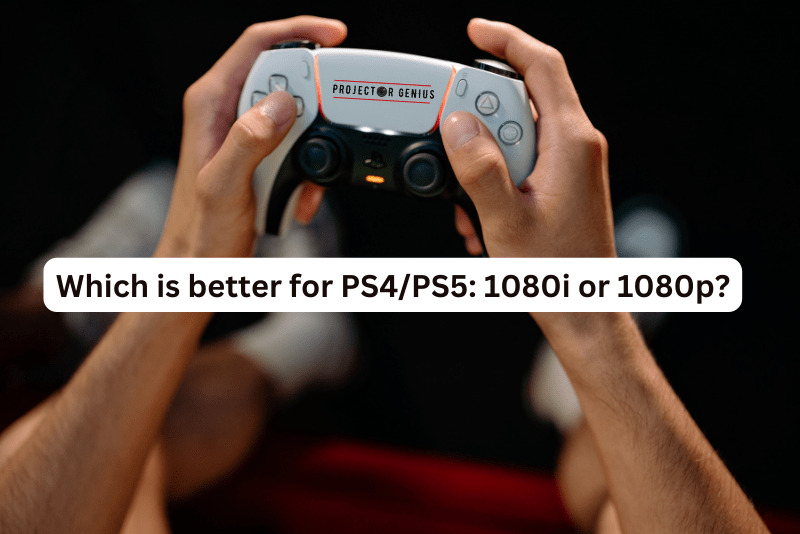
For both the PS4 and PS5 gaming consoles, 1080p is the better choice compared to 1080i. Both PS4 and PS5 are designed to output video content in 1080p resolution for optimal gaming performance and image quality. Here’s why 1080p is the preferred resolution:
Native Resolution
The PS4 and PS5 are capable of rendering and outputting games in 1080p resolution, which means that the games are designed to be displayed in progressive scan mode (1080p). Playing games in their native resolution ensures the best visual experience with smooth motion and clarity.
Motion Handling
Gaming involves a lot of fast-paced action, and using 1080p allows for better motion handling due to progressive scans. This results in reduced motion blur and smoother gameplay.
Compatibility
While some older TVs or displays may support 1080i, both the PS4 and PS5 are optimized for 1080p output. Connecting these consoles to a 1080p display ensures the best compatibility and performance.
Input Lag
1080p displays generally have lower input lag compared to 1080i displays, providing a more responsive gaming experience, which is crucial for competitive gaming or fast-paced games.
Future-Proofing
As technology advances, support for 1080p resolution will continue to be widespread, while 1080i is becoming less common. By using a 1080p display, you ensure that your gaming setup remains compatible with current and future gaming consoles and content.
Which is Better Quality 1080i or 1080p for Netflix?
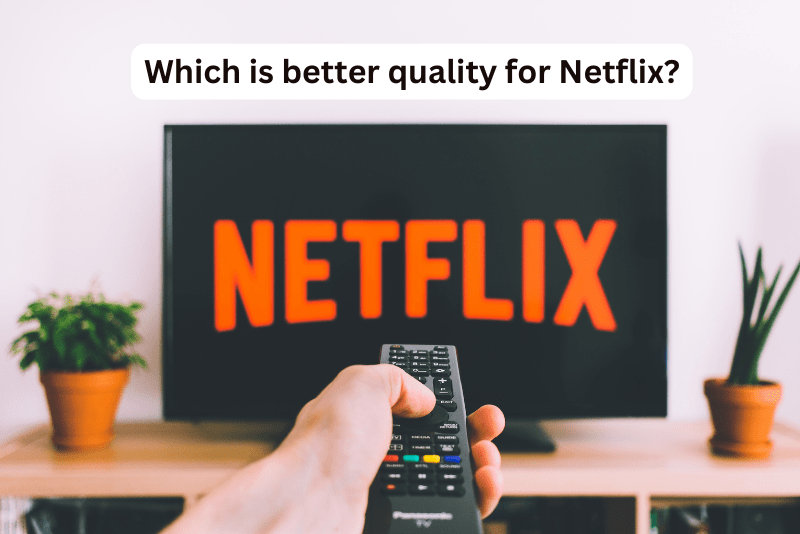
When it comes to Netflix, choosing 1080p over 1080i is a smart move for better image quality. 1080p’s progressive scan offers smoother visuals and improved motion handling, ensuring a consistent and enjoyable viewing experience. Plus, it’s more compatible with modern devices and future-proofs your setup for evolving content quality.
Is 1080i Better Than 1080p for Sports?
For sports broadcasting, 1080p is generally considered better than 1080i in most cases. Here’s why:
Motion Handling
Sports involve fast-paced action, quick movements, and rapid camera panning. 1080p’s progressive scan displays each frame sequentially, providing smoother motion handling and reducing motion blur. This results in clearer and more detailed visuals during fast-paced sports events.
Reduced Artifacts
Interlaced formats like 1080i may introduce motion artifacts during sports broadcasting, especially when there are quick changes in camera angles or fast movements. These artifacts can be distracting and affect the viewing experience.
Clarity and Detail
1080p offers higher image clarity and detail compared to 1080i. With 1080p, you can see more intricate details, such as the players’ expressions, the ball’s trajectory, and small movements on the field, making the viewing experience more immersive.
Consistency
Many sports events and channels broadcast in 1080p or offer 1080p streams. By using a 1080p display, you ensure a consistent and optimized viewing experience for sports across different broadcasters and content sources.
Broadcasting Trends
As technology advances, more sports broadcasters are moving towards using 1080p or even higher resolutions for their content. 1080p is becoming the standard for high-definition sports broadcasting.
While some sports content might still be broadcast in 1080i, the trend is moving towards 1080p as it offers superior motion handling and image quality, especially for fast-moving and dynamic sports events.
Is 1080i Outdated?
1080i can be considered somewhat outdated in the context of modern high-definition content delivery. While it was once a prevalent format for high-definition television (HDTV) and broadcasting, it has gradually become less common in recent years due to the rise of progressive scan technologies like 1080p and higher resolutions like 4K.
Several factors contribute to the decreasing popularity of 1080i:
Motion Artifacts
Interlaced formats like 1080i can introduce motion artifacts and flickering during fast-paced action moves, which can be distracting and reduce overall image quality, especially for high-motion content like sports and action movies.
Progressive Scan Prevalence
Progressive scan technologies, such as 1080p, have become the standard for modern high-definition content delivery. They offer smoother motion, reduced artifacts, and overall better image quality compared to interlaced formats.
Display Technology Advancements
Modern display technologies, such as LCD, LED, and OLED, are better suited for progressive scan content. These displays are widely available and optimized for rendering progressive scan images, making 1080p a more suitable and prevalent choice.
Resolution Advancements
As video technology progresses, higher resolutions like 4K have gained popularity, offering even greater image clarity and detail compared to 1080i.
While 1080i may still be supported by some older broadcasting standards, it is gradually being phased out in favor of progressive scan formats like 1080p and higher resolutions. As a result, many content creators, broadcasters, and consumers prefer progressive scan resolutions for their high-definition content.
Is 1080i a Full HD?
Yes, 1080i is considered a form of full HD (high-definition). The term “full HD” refers to a video resolution of 1920×1080 pixels, also known as 1080p (progressive scan), or 1080i (interlaced scan). Both 1080p and 1080i have the same horizontal resolution of 1920 pixels and vertical resolution of 1080 pixels.
What is the Difference Between HDMI 1080i and 1080p Cable?
There is no specific “HDMI 1080i” or “HDMI 1080p” cable. HDMI (High-Definition Multimedia Interface) cables are designed to carry high-definition audio and video signals between devices like TVs, monitors, Projectors, and audio/video sources such as gaming consoles, Blu-ray players, and streaming devices.
The difference between 1080i and 1080p lies in the video signal being transmitted over the HDMI cable:
HDMI 1080i
This refers to an HDMI cable that is capable of carrying a 1080i video signal. In the context of HDMI cables, there is no difference between an HDMI cable for 1080i and an HDMI cable for 1080p. The cable itself remains the same; what changes is the resolution and scanning method of the video signal being sent through the cable.
HDMI 1080p
Similarly, an HDMI cable for 1080p is the same as a regular HDMI cable. The difference is that the video signal being transmitted is in 1080p resolution, which means it is displaying a progressive scan image (where each frame is drawn sequentially), providing smoother motion and better image quality compared to interlaced formats like 1080i.
In practical terms, the HDMI cables themselves do not have different versions for 1080i or 1080p. Standard HDMI cables are designed to handle both 1080i and 1080p resolutions, as well as other lower and higher resolutions. The capabilities of the display or receiving device and the source device (e.g., gaming console or Blu-ray player) determine whether the content is sent in 1080i or 1080p.
Is 4K the Same as 1080i?
No, 4K is not the same as 1080i. They are two different video resolutions with distinct characteristics:
4K Resolution:
4K, also known as Ultra High Definition (UHD), has a resolution of approximately 3840×2160 pixels, providing four times the number of pixels compared to 1080p or Full HD.
It offers significantly higher image clarity and detail, making it ideal for large screens and immersive viewing experiences.
1080i Resolution:
1080i has a resolution of 1920×1080 pixels. It is a form of high-definition video, but unlike 1080p, which is progressively scanned (each frame is displayed sequentially), 1080i uses interlaced scanning (the video is divided into two fields, odd and even, and each field is displayed alternately).
The main differences between 4K and 1080i are their resolutions and scanning methods:
4K has a much higher resolution and provides greater image clarity and detail compared to 1080i.
1080i has a lower resolution and may introduce some motion artifacts and flickering during fast-paced actions due to its interlaced scanning.
4K is becoming more popular as technology advances, and it is increasingly used in high-end TVs, monitors, Projectors, and content production. On the other hand, 1080i is becoming less common in modern setups, as higher resolutions like 4K and 1080p offer improved image quality and smoother motion.
Are There Differences in Screen Size or Distance Requirements for 1080p and 1080i Projectors?
No, there are no differences in screen size or distance requirements specifically between 1080p and 1080i Projectors. The screen size and distance requirements for Projectors are primarily determined by the Projector’s throw ratio and the desired image size, not the resolution.
Both 1080p and 1080i Projectors have the same native resolution of 1920×1080 pixels, which means they can both project images in high-definition quality with the same number of pixels.
The Factors that Affect the Screen Size and Distance Requirements for Projectors Include:
Throw Ratio
The throw ratio of a Projector determines how far the Projector needs to be placed from the screen to achieve a specific image size. It is the ratio of the distance from the Projector lens to the screen and the width of the projected image. Projectors with different throw ratios will require different placement distances to achieve the same image size.
Desired Image Size
The screen size you want to achieve will impact the Projector’s placement distance. Larger screen sizes will require the Projector to be placed farther away from the screen, while smaller screen sizes will allow for closer placement.
Zoom and Lens Shift
Some Projectors offer zoom and lens shift features, which can provide more flexibility in adjusting the image size and placement distance without physically moving the Projector.
Room Size and Layout
The available space in the room and the layout of the seating area can also influence the optimal Projector placement and screen size.
Both 1080p and 1080i Projectors have the same native resolution, so there are no inherent differences in screen size or distance requirements based on the resolution alone. The screen size and distance requirements are determined by the Projector’s throw ratio, desired image size, and the specific features offered by the Projector model.
Final Thoughts
When comparing 1080p and 1080i, it is evident that 1080p is generally the preferred choice for various applications. 1080p’s progressive scan offers higher image clarity, smoother motion, and better overall video quality, making it suitable for modern high-definition content delivery.
While 1080i may still have specific use cases, such as certain broadcasting scenarios or compatibility with older devices, its interlaced scanning method and potential motion artifacts make it less popular in contemporary setups.
For optimal viewing experiences in home theaters, gaming, streaming services like Netflix, and other multimedia applications, 1080p stands out as the superior resolution, providing users with an immersive and enjoyable visual experience.
Author of this Post:

Kristy Roger
Home Cinema Consultant & Tech Enthusiast
Holding a background in Industrial and Electrical Technology from the University of Alberta, Kristy has spent 5+ years consulting on home theater products at a top electronics firm. As a certified Technical Professional with Lean Six Sigma credentials, Kristy expertise ranges from projector nuances to hands-on experience with leading models. Kristy have been sharing her knowledge online for two years, blending professional insights with personal experiences from her own home cinema setup. Off the screen, She is a dedicated mom to Jerry, Ryan, and our two pups, Cuddle and Paw.

